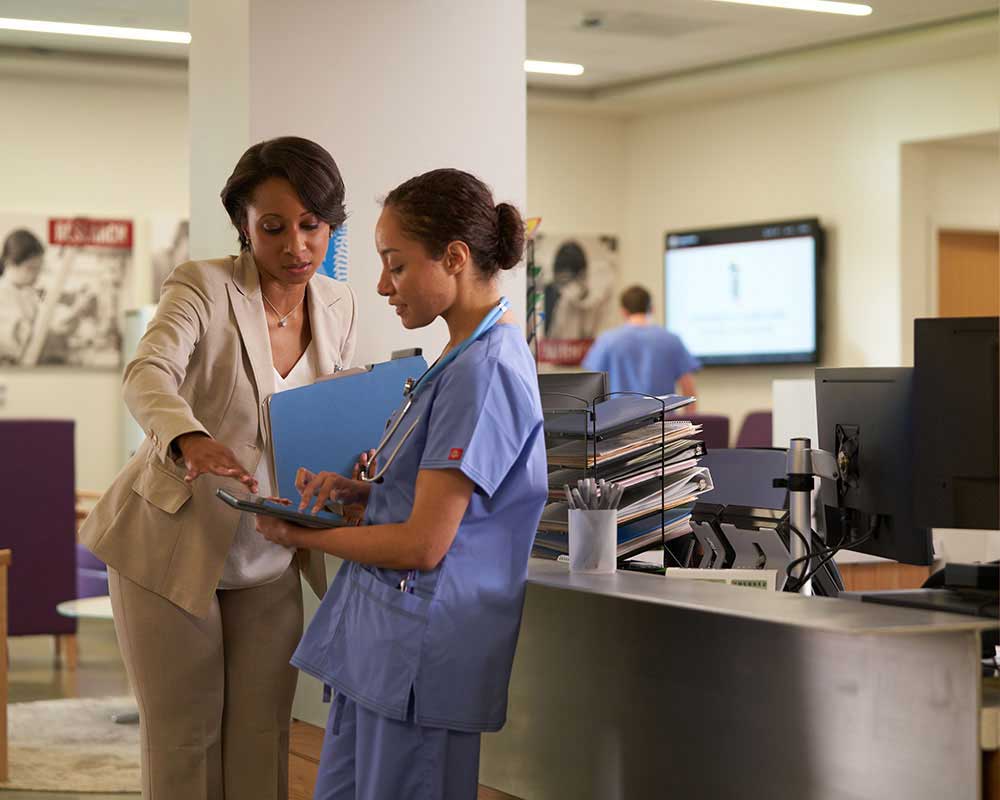Just How to Improve Effectiveness in Medical Administration with Modern Devices
Just How to Improve Effectiveness in Medical Administration with Modern Devices
Blog Article
Ideal Practices in Medical Management for Improving Performance and Minimizing Expenses
In the ever-evolving landscape of health care, the pursuit of ideal techniques in medical administration is extremely important for boosting effectiveness and curbing expenditures. By incorporating advanced technologies such as digital health and wellness documents and telemedicine, doctor can improve procedures and enhance patient treatment. Nevertheless, innovation alone is not a cure all; maximizing source allocation and promoting joint communication amongst care groups are equally crucial (medical administration). As companies aim to stabilize quality and expense, what strategies should be focused on to attain these twin goals? The solutions to these questions hold the key to a more sustainable medical care system.
Leveraging Advanced Innovation
In today's swiftly evolving healthcare landscape, leveraging sophisticated innovation is no longer optional but necessary for reliable clinical management. The assimilation of digital remedies into healthcare systems has transformed the method facilities operate, enhancing procedures and enhancing client treatment. Electronic Health And Wellness Records (EHRs) are essential, giving thorough person information that can be accessed instantaneously by accredited employees, hence lowering redundancy and decreasing mistakes. By centralizing person info, EHRs remove the demand for troublesome documents and assist in seamless communication amongst doctor.
Telemedicine is one more technological innovation that has actually transformed patient communication. It provides ease for both patients and health care professionals by making it possible for remote examinations, which can lower the requirement for in-person sees and optimize consultation scheduling. In addition, telehealth platforms can extend medical care accessibility to country or underserved areas, linking spaces in treatment delivery.
Additionally, the usage of Artificial Knowledge (AI) and equipment knowing is coming to be progressively widespread in predictive analytics, enabling very early detection of prospective wellness issues and even more enlightened decision-making. These innovations, when incorporated effectively, can enhance analysis accuracy and customize person treatment plans, eventually bring about enhanced health care end results and operational efficiency.
Optimizing Resource Allowance
By strategically managing resources such as personnel, equipment, and funds, medical care centers can substantially improve their operational efficiency, boost individual results, and decrease unnecessary expenditures. The first step in maximizing source allowance involves carrying out an extensive assessment of existing assets and recognizing locations where resources might be underutilized or overextended.
Focusing on resource allowance based on patient requirements and solution demands is necessary. Implementing versatile staffing versions can also enhance labor sources by adjusting workers appropriation in response to changing person volumes.
Funds should be carefully checked and assigned with calculated insight to sustain both short-term operational requirements and lasting institutional objectives. This includes investing in training programs that enhance personnel proficiencies and taking on energy-efficient practices that decrease operational expenses (medical administration). Inevitably, a maximized source allocation strategy promotes a sustainable healthcare environment that is responsive, effective, and monetarily prudent
Streamlining Operations Processes
When medical care centers purpose to improve functional effectiveness, streamlining process procedures ends up being a pivotal emphasis. Effective operations reduce redundancy, eliminate unnecessary steps, and enhance coordination amongst medical care specialists. This strategy not only accelerates solution distribution however likewise improves the quality of patient care.

Following, technology combination plays a significant function in improving operations. Executing digital health records (EHRs) and digital physician order access (CPOE) systems decreases documentation, minimizes human error, and makes sure information comes to all pertinent personnel. Furthermore, leveraging telemedicine systems can streamline client appointments and follow-ups, reducing the stress on physical facilities.

Inevitably, structured operations bring about set you back decreases and improved client fulfillment, promoting a much more lasting health care atmosphere.
Enhancing Data Management
Building upon structured workflows, optimizing data monitoring comes to be an essential part in progressing health care administration. Efficient information administration systems are important for preserving accurate individual records, enhancing decision-making, and guaranteeing compliance with regulative standards. By applying durable data monitoring options, healthcare facilities can boost the high quality of patient care while at the same time reducing functional costs.
One key facet of enhancing data administration is the combination of innovative electronic health document (EHR) systems. These systems help description with the smooth exchange of client details across various divisions, lowering duplication of tests and minimizing mistakes. A properly designed EHR system supports information analytics, allowing medical care service providers to recognize fads and make educated decisions concerning person treatment.
Additionally, protecting client information is vital. Embracing comprehensive cybersecurity steps, consisting of encryption and routine audits, makes sure the honesty and confidentiality of sensitive details. This not just secures clients but additionally maintains the institution's credibility.
Purchasing team training is one more vital variable. Educating medical care experts on information monitoring methods improves their capacity to efficiently make use of technology, resulting in boosted individual results. Finally, boosting information administration with sophisticated innovation and detailed training is necessary for accomplishing performance and expense decrease in clinical administration.
Fostering Collaborative Interaction
A have a peek at these guys crucial component ahead of time clinical management is promoting collective communication amongst healthcare specialists. Effective interaction is paramount for ensuring smooth patient care, maximizing treatment end results, and reducing errors. By encouraging open discussion and control throughout multidisciplinary groups, medical care companies can boost their functional effectiveness and lower unnecessary expenses.
Central to this technique is the integration of communication technologies such as digital health documents (EHRs) and secure messaging platforms, which help with the fast exchange of critical individual details. These tools allow doctor to gain access to and share data in genuine time, making certain that all employee are informed and aligned in their decision-making procedures. Regular team conferences and interdisciplinary rounds can even more advertise a culture of partnership and liability.
Training programs concentrated on improving communication abilities are also important. These programs can aid team develop the ability to communicate information plainly and pay attention proactively, hence decreasing misunderstandings and promoting a supportive job environment. Furthermore, adopting standardized communication procedures, such as SBAR (Scenario, History, Evaluation, Suggestion), can streamline the exchange of details, guaranteeing that important information are conveyed succinctly and successfully. Inevitably, promoting collaborative communication leads to boosted medical care delivery and cost financial savings (medical administration).

Verdict
Including advanced technology, such as electronic More Bonuses wellness documents and telemedicine, together with optimized resource allotment and streamlined workflow processes, is vital for boosting efficiency in medical management. Efficient information monitoring and cultivating collective communication among healthcare groups are important for minimizing redundancies and boosting treatment quality. By focusing on precautionary care and engaging in top quality improvement efforts, medical care organizations can achieve significant expense savings and enhanced individual outcomes, consequently ensuring lasting healthcare shipment in a progressively intricate setting.
Report this page